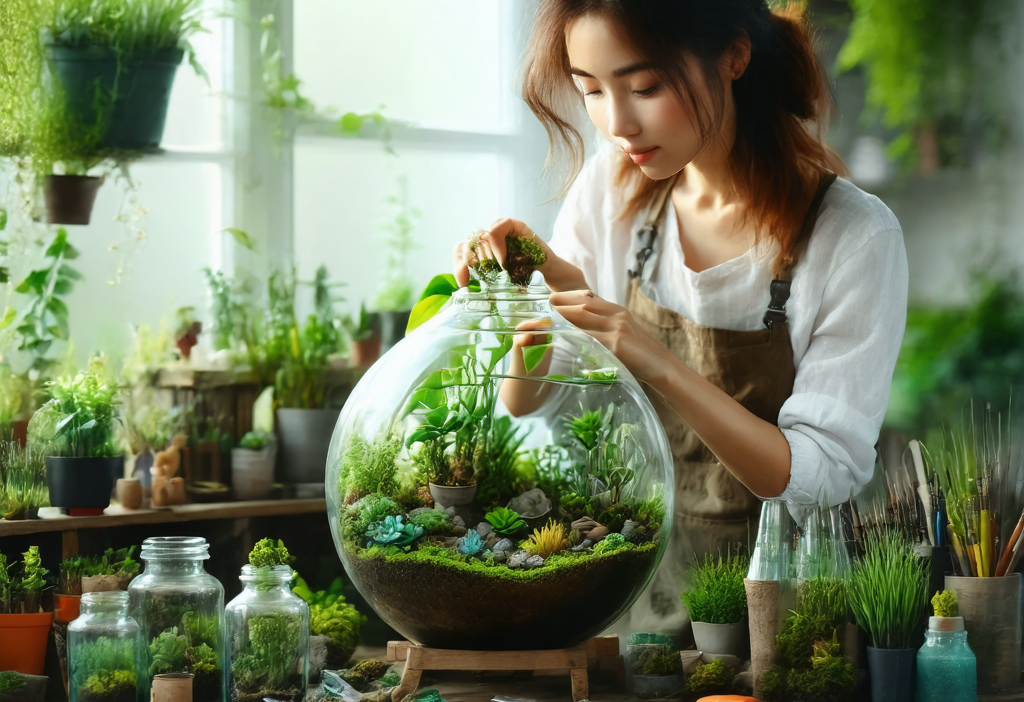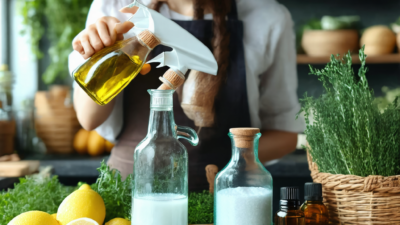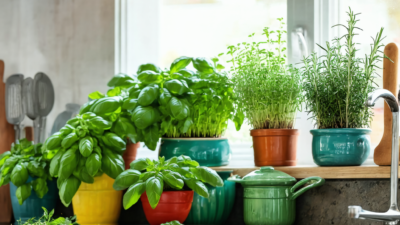Discover the Magic of DIY Terrariums
Terrariums are more than just a trendy home decor item; they’re a way to bring the beauty of nature into your living space. Whether you’re a seasoned gardener or a curious beginner, creating a terrarium can be a fun and rewarding project. In this guide, we’ll walk you through everything you need to know to create your own DIY terrarium.
What is a Terrarium?
A terrarium is a miniature garden contained within a glass container. It’s a self-sustaining ecosystem that can thrive with minimal maintenance. The clear glass allows light to pass through, enabling plants to photosynthesize, while the enclosed environment retains moisture, creating an ideal microclimate for plant growth.
Materials You’ll Need
To get started, you’ll need a few key materials:
- A glass container (fishbowl, apothecary jar, or terrarium kit)
- Activated charcoal
- Pebbles or small rocks
- Potting soil
- Plants (succulents, air plants, or ferns work well)
- Gardening tools (small trowel, spoon)
- Decorative elements (like moss, figurines, or crystals)
Choosing the Right Plants
When selecting plants for your terrarium, consider their light and moisture needs. Since terrariums are enclosed, they’re best suited for plants that thrive in humid environments. Here are some popular choices:
- Succulents: Hardy and low-maintenance, succulents come in a variety of shapes and sizes.
- Air Plants: These plants don’t need soil and can add a unique touch to your terrarium.
- Ferns: Add a lush, green element with these moisture-loving plants.
Step-by-Step Guide to Building Your Terrarium
Creating a terrarium is a step-by-step process that ensures your plants thrive. Follow these instructions carefully:
- Prepare the Container: Clean your glass container thoroughly and ensure it’s dry.
- Add Drainage Layer: Place a layer of pebbles or small rocks at the bottom to promote drainage and prevent water from pooling.
- Add Activated Charcoal: Sprinkle a thin layer of activated charcoal on top of the pebbles to keep the environment fresh and prevent mold growth.
- Layer Potting Soil: Add a layer of potting soil, making sure it’s moist but not waterlogged.
- Plant Your Greens: Gently place your plants in the soil, arranging them according to your design. Make sure they’re spaced adequately to allow growth.
- Add Decorative Elements: Personalize your terrarium with moss, figurines, or crystals to give it a unique touch.
- Cover (Optional): If you’re using an open container, you can cover it with a lid. For closed containers, ensure there’s enough ventilation to prevent excessive humidity.
Maintaining Your Terrarium
Once your terrarium is set up, proper care ensures it stays healthy and vibrant:
- Lighting: Place your terrarium in indirect sunlight to prevent overheating. Rotate the container occasionally to ensure even light distribution.
- Watering: Since terrariums are self-sustaining, they rarely need watering. If you notice the soil drying out, add a small amount of water using a spray bottle or pipette.
- Cleaning: Keep the glass clean to allow maximum light penetration. Use a soft cloth and mild soap if necessary.
Add Personal Touches
Your terrarium is a canvas for your creativity. Experiment with different plant combinations, decorative elements, and container styles to make it uniquely yours. Consider adding themed elements like miniature animals or seasonal decor to match your home’s aesthetic.
Troubleshooting Common Issues
Even with the best care, issues may arise:
- Foggy Glass: If condensation builds up, it could be due to overwatering or poor ventilation. Open the lid slightly and let it dry out a bit.
- Fungal Growth: This can occur if there’s too much moisture. Increase airflow by propping open the lid or removing some plants to improve circulation.
Conclusion
Creating a DIY terrarium is an enjoyable project that brings nature indoors, adding life and beauty to your space. By following these steps and tips, you’ll be able to craft a stunning terrarium that provides joy for years to come. Happy crafting!





